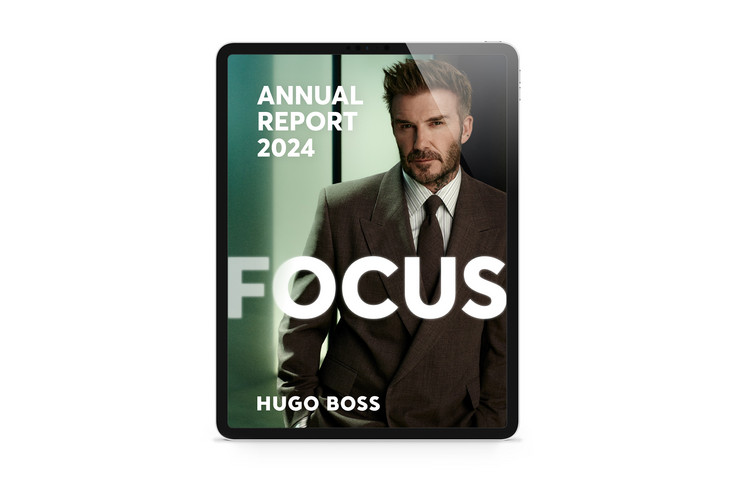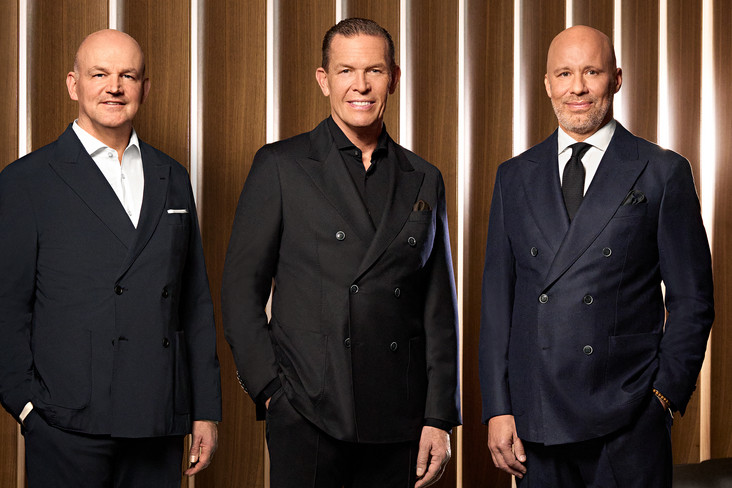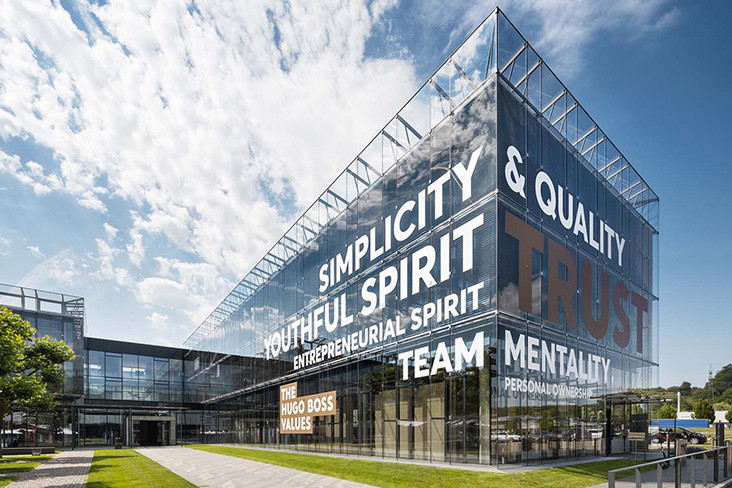Group Management
and Strategy

Key performance indicators
In order to increase its enterprise value, HUGO BOSS focuses on maximizing free cash flow over the long term. By consistently generating positive free cash flow, the Group is confident of safeguarding the liquidity of HUGO BOSS at all times while, at the same time, facilitating the long-term growth of the business.
DEFINITION FREE CASH FLOW
Cash flow from operating activities
+ Cash flow from investing activities
= Free Cash flow
Increasing sales and operating profit (EBIT) is key to improving free cash flow over the long term. In addition, a strict management of trade net working capital and a value-oriented capital expenditure approach support the development of free cash flow. HUGO BOSS has therefore identified four key performance indicators for increasing free cash flow. These comprise sales, EBIT, trade net working capital, and capital expenditure. The 2025 guidance for these key performance indicators is presented here. Details on the financial development of HUGO BOSS in fiscal year 2024 can be found here.
-
Operating Profit (EBIT)
DEFINITION EBIT
Earnings before taxes
– Financial result
= Operating profit (EBIT) -
Trade net working capital
DEFINITION TRADE NET WORKING CAPITAL
Inventories
+ Trade receivables
– Trade payables
= Trade net working capital
Management of inventories and trade receivables is the main responsibility of our subsidiaries and the respective operating central departments. The latter are also responsible for managing trade payables. These three balance sheet items are primarily managed by reference to the days of inventories outstanding, days of sales outstanding, and days of payables outstanding. Besides this, there is a specific approval process for the purchase of inventories for our global retail business aimed at constantly optimizing inventory levels. This process takes into account sales quotas, expected sales growth, and anticipated markdown levels.
-
Capital expenditure
Investment activity is primarily focused on our own retail network, the digitalization of our business model, as well as the expansion of our global logistic capacities. As part of our strategic claim “Drive Omnichannel,“ we are further optimizing and modernizing our global store network. In line with our claim “Lead in Digital,” digital investments are pushed along the entire value chain – from digital product creation to digital showrooms, the continuous enhancement of our own online business, as well as our Digital TWIN initiative and general IT infrastructure. As part of our claim “Organize for Growth,” we are strategically expanding one of our key logistic hubs near our headquarters in Metzingen (Germany) with a planned go-live in 2026. A specific approval process exists for material investment projects. Apart from qualitative analyses, e.g., with respect to potential store locations, this also includes an analysis of each project’s net present value.
Group Strategy
With CLAIM 5 TOUCHDOWN, HUGO BOSS is setting the course through 2028 and paving the way for sustainable, profitable growth. Amid a challenging market environment, this strategy builds on the successes of CLAIM 5 since 2021. Moving forward, HUGO BOSS’ strategic direction remains unchanged, but the focus sharpens. 2026 will serve as a year of realignment, strengthening the business by streamlining processes, refining assortments, and optimizing the distribution network.
At the same time, HUGO BOSS will significantly accelerate free cash flow generation, forming the foundation for continued shareholder returns. To deliver against this, execution will center on three key fields of excellence: brand, distribution, and operations. These priorities will boost efficiency and set the stage for renewed top- and bottom-line growth from 2027 onward. With this stronger financial foundation, the Company is well positioned to progress toward its long-term EBIT margin ambition of around 12%, reinforcing its commitment to delivering value to all shareholders.


